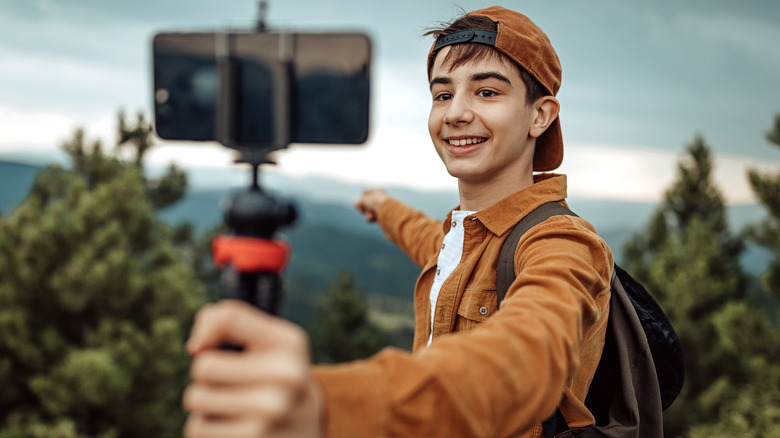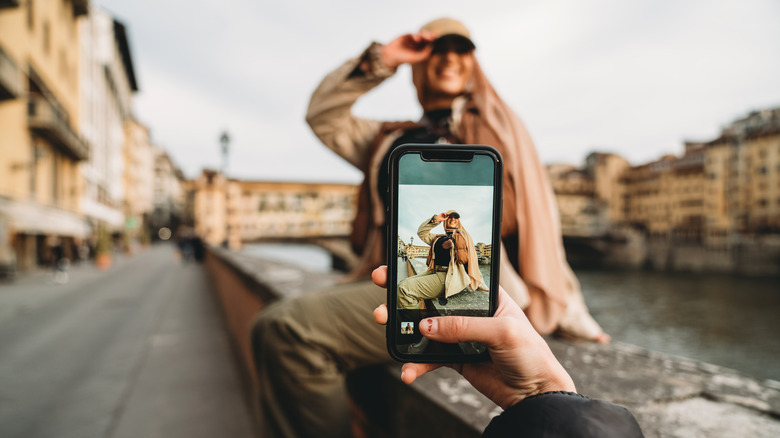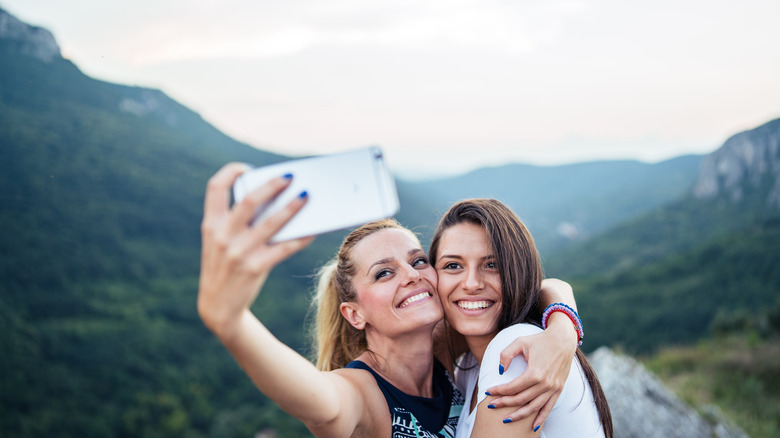Why You Should Think Twice Before Geo Tagging Your Vacation Posts
Sharing your experiences on social media can be a huge part of the essence and passion for travel, but it's not without its pitfalls. From its impacts on young people's mental health to its ironic effects on encouraging social isolation instead of face-to-face interaction, there are already a plethora of reasons to reduce your use of social media.
However, it can feel like you're missing out on earning major online cred if you don't post about your travels on social media. After all, the whole point of platforms like Instagram and Facebook is to show up and show off. Nevertheless, we have one more good reason that may make you change the way you interact with your followers: geotagging's negative impacts on the environment. Yup, you read that right. But what is geotagging, and why specifically can it be bad for nature and small locales? Read on to learn more.
Why geotagging is the worst thing about social media
When a user adds their location to a post, anyone who views it can see where they are — or visited. That's geotagging. If your account is public, that can be just about anyone on the platform, including those with bad intentions.
But the issue of geotagging rears its ugly head in places like Africa, where poaching is rampant. When safari-goers see amazing animals like rhinos and elephants, they will likely take photos and post them to their timelines. When these posts include geotags, this alerts poachers to the location of these precious creatures, putting them in harm's way.
Another way geotags can harm the environment is when travelers, specifically hikers, pinpoint extra special locations in national parks and other natural areas that are less traveled but incredibly beautiful. This can increase traffic to these sites and create unchecked erosion of these smaller trails.
Some people consider the disapproval of geotagging of untouched places to be gatekeeping. After all, nature is meant to be enjoyed by everyone. Nonetheless, it's still worth considering before clicking "post."
How to responsibly geotag your travels
While you might feel that your small account couldn't possibly contribute to the negative effects of geotagging, reconsider. Like anything in life, every drop counts, and that goes for your activity on social media, too. But that doesn't mean you can never geotag again; you only need to opt for a responsible approach.
For major tourist hot spots that can handle foot traffic, it's not as much of a concern. Think of famous sites like the Eiffel Tower, the Trevi Fountain, or the Taj Mahal. These places either have preventions to reduce the number of people visiting — like Machu Picchu — or can handle many tourists since they are in major city centers.
If you discover a new, lesser-known place in your travels, you might want to think twice before posting your exact location. Places like secret beaches in Mexico or panoramic views of remote lakes in Wyoming are probably not equipped to handle an unexpected influx of people. But if you desperately need to share your discovery, post the general location, such as the city or area, and only give the specific location to people you know you can trust and will not share it with the world.


